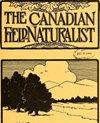Estimated effects of clear-cuts and burns associated with habitat use by female Newfoundland Caribou (Rangifer tarandus)
Q4 Agricultural and Biological Sciences
引用次数: 0
Abstract
The decline of Caribou (Rangifer tarandus) is mainly attributed to anthropogenic disturbance from resource development (i.e., logging, oil and gas extraction), which causes habitat loss and increased predation risk. Natural landscape disturbance, particularly from fire, can have similar effects, and cumulative effects from disturbance have been associated with lower neonate recruitment. Our objective was to evaluate the potential effects of land cover types on resource selection by females, with an emphasis on clear-cuts and fire, during the calving season (May–June) in three neighbouring herds (Middle Ridge, Gaff Topsails, and Pot Hill) on insular Newfoundland, Canada, and compare results with pre-existing information on calf recruitment. We applied a resource selection framework to analyze location data collected from global positioning system collars between 2007–2010 and estimate relative probability of use for different cover types. Recruitment was lowest in Pot Hill, where ≤10-year old clear-cuts were favoured, whereas recruitment was highest in Middle Ridge and Gaff Topsails, where females favoured burns, suggesting that burns could be more beneficial to Caribou fitness. Further investigation will be needed to more closely examine how anthropogenic versus natural disturbance affects Caribou fitness in Newfoundland and improve our understanding of important habitat for calving females.雌性纽芬兰驯鹿(Rangifer tarandus)利用栖息地所造成的毁林和烧伤影响的估计
北美驯鹿(Rangifer tarandus)数量的减少主要是由于资源开发(即伐木、石油和天然气开采)造成的人为干扰,导致栖息地丧失和被捕食风险增加。自然景观干扰,特别是来自火灾的干扰,可以产生类似的影响,干扰的累积效应与较低的新生儿招募有关。我们的目的是评估在加拿大纽芬兰岛的三个邻近象群(Middle Ridge, Gaff Topsails和Pot Hill)的产犊季节(5 - 6月),土地覆盖类型对雌性资源选择的潜在影响,重点是砍伐和焚烧,并将结果与已有的小牛招募信息进行比较。我们应用资源选择框架分析了2007-2010年间从全球定位系统项圈收集的位置数据,并估计了不同覆盖类型的相对使用概率。在Pot Hill地区招募最少,在那里≤10年的树木被砍伐殆尽,而在Middle Ridge和Gaff Topsails地区招募最多,在那里雌性喜欢烧伤,这表明烧伤可能更有利于驯鹿的健康。需要进一步的调查来更仔细地研究人为干扰与自然干扰如何影响纽芬兰驯鹿的适应性,并提高我们对产犊雌性重要栖息地的理解。
本文章由计算机程序翻译,如有差异,请以英文原文为准。
求助全文
约1分钟内获得全文
求助全文
来源期刊

The Canadian Field-Naturalist
Agricultural and Biological Sciences-Ecology, Evolution, Behavior and Systematics
CiteScore
0.60
自引率
0.00%
发文量
54
期刊介绍:
The Canadian Field-Naturalist (ISSN: 0008-3550) publishes scientific papers by amateur and professional naturalists and field biologists, reporting observations and results of investigations in any field of natural history, provided they are original, significant, and relevant to Canada.
 求助内容:
求助内容: 应助结果提醒方式:
应助结果提醒方式:


